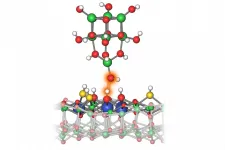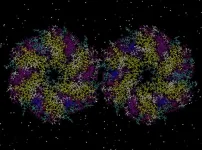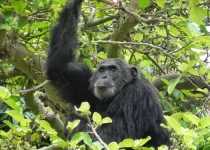Cancer-linked mutation accelerates growth of abnormal stroke-causing brain blood vessels
NIH-funded study suggests an anticancer drug could prevent bleeding into the brain
2021-04-28
(Press-News.org) Researchers have discovered an explanation for why cerebral cavernous malformations (CCMs)--clusters of dilated blood vessels in the brain--can suddenly grow to cause seizures or stroke. Specifically, they found that a specific, acquired mutation in a cancer-causing gene (PIK3CA) could exacerbate existing CCMs in the brain. Furthermore, repurposing an already existing anticancer drug showed promise in mouse models of CCMs in improving brain-vascular health and preventing bleeding into the brain tissue.
Previous studies linked the initial formation of CCMs to various environmental factors, including differences in the gut microbiome, and inactivating mutations in three specific genes collectively known as the "CCM complex." While these changes are enough to cause small malformations to form in the brain, they didn't explain why some suddenly expand in size, resulting in seizures or stroke.
Using mouse genetic models of CCM formation, the researchers discovered that it is the additional "hit" that stimulates the known cancer-causing gene PIK3CA and leads to the rapid growth of existing CCMs. When they examined resected human CCM tissue, they saw the same genes were involved, which supports the idea of a "cancer-like" mechanism for accelerated blood vessel malformation growth in which small quiescent CCMs become "malignant" after a new gene mutation occurs.
In cancer, the PIK3CA mutation results in an increase in PI3K-mTOR signaling, which is a well-established drug target for the treatment of tumors. Rapamycin is an FDA-approved drug that inhibits that same signaling pathway and has been used to treat malformations in the veins and lymphatic system. Here, rapamycin significantly reduced CCM formation in genetic mouse models, suggesting it could be potentially used as a treatment.
The study was led by Mark L. Kahn, M.D. at the Perelman School of Medicine, University of Pennsylvania, Philadelphia. His team continues to study what causes CCM formation and growth, and proposes that further analyses of human CCM lesions and clinical testing of rapamycin and similar drugs is necessary to determine whether this mechanism can be a target for therapy.
INFORMATION:
WHO:
Jim Koenig, Ph.D., program director, National Institute of Neurological Disorders and Stroke (NINDS)
ARTICLE:
Ren AA et al., Oncogenic PIK3CA mutations synergize with CCM mutations to fuel growth of cerebral cavernous malformations. Nature. April 28, 2021. DOI: 10.1038/s41586-021-03562-8
This study was supported by the National Institute of Neurological Disorders and Stroke (NS100949, NS092521, NS115256, NS100252), the National Heart, Lung, and Blood Institute (HL094326, HL007150, HL152738), the Leducq Foundation, the AHA-Allen Foundation, and the European Research Council.
This media availability describes a basic research finding. Basic research increases our understanding of human behavior and biology, which is foundational to advancing new and better ways to prevent, diagnose, and treat disease. Science is an unpredictable and incremental process -- each research advance builds on past discoveries, often in unexpected ways. Most clinical advances would not be possible without the knowledge of fundamental basic research.
NINDS is the nation's leading funder of research on the brain and nervous system. The mission of NINDS is to seek fundamental knowledge about the brain and nervous system and to use that knowledge to reduce the burden of neurological disease.
About the National Institutes of Health (NIH): NIH, the nation's medical research agency, includes 27 Institutes and Centers and is a component of the U.S. Department of Health and Human Services. NIH is the primary federal agency conducting and supporting basic, clinical, and translational medical research, and is investigating the causes, treatments, and cures for both common and rare diseases. For more information about NIH and its programs, visit http://www.nih.gov.
ELSE PRESS RELEASES FROM THIS DATE:
2021-04-28
The degree of acidity or alkalinity of a substance is crucial for its chemical behavior. The decisive factor is the so-called proton affinity, which indicates how easily an entity accepts or releases a single proton. While it is easy to measure this for molecules, it has not been possible for surfaces. This is important because atoms on surfaces have very different proton affinities, depending on where they sit.
Researchers at TU Wien have now succeeded in making this important physical quantity experimentally accessible for the first time: Using a specially modified atomic force microscope, it is possible to study the proton affinity of individual atoms. This should help to analyze catalysts on an atomic scale. The results have been published in the scientific journal Nature.
Precision ...
2021-04-28
COLUMBUS, Ohio - Tiny molecules called nanobodies, which can be designed to mimic antibody structures and functions, may be the key to blocking a tick-borne bacterial infection that remains out of reach of almost all antibiotics, new research suggests.
The infection is called human monocytic ehrlichiosis, and is one of the most prevalent and potentially life-threatening tick-borne diseases in the United States. The disease initially causes flu-like symptoms common to many illnesses, and in rare cases can be fatal if left untreated.
Most antibiotics can't build up ...
2021-04-28
ATLANTA--Processed diets, which are low in fiber, may initially reduce the incidence of foodborne infectious diseases such as E. coli infections, but might also increase the incidence of diseases characterized by low-grade chronic infection and inflammation such as diabetes, according to researchers in the Institute for Biomedical Sciences at Georgia State University.
This study used mice to investigate how changing from a grain-based diet to a highly processed, high-fat Western style diet impacts infection with the pathogen Citrobacter rodentium, which resembles Escherichia coli (E. coli) infections in humans. The findings are published in the journal PLOS Pathogens.
Gut microbiota, the microorganisms living in the intestine, provide a number of benefits, ...
2021-04-28
The scientific community is focusing its research into the multiple applications of Hydrogels, polymeric materials which contains a large amount of water, that have the potential to reproduce the features of biological tissues. This aspect is particularly significant in the field of regenerative medicine, which since a long time has already recognised and been using the characteristics of these materials. In order to be used effectively to replace organic tissues, hydrogels must meet two essential requirements: possessing great geometric complexity and, after suffering of a damage, being ...
2021-04-28
Researchers at the University of Bath investigating how virtual reality (VR) can help improve balance believe this technology could be a valuable tool in the prevention of falls.
As people grow older, losing balance and falling becomes more common, which increases the risk of injury and affects the person's independence.
Falls are the leading cause of non-fatal injuries in over 65-yearolds and account for over 4 million bed days per year in England alone, at an estimated cost of £2 billion.
Humans use three ways of keeping their balance: vision, proprioceptive (physical feedback from muscles and joints) and vestibular system (feedback from semi-circular canals in the ear). Of these, vision is the most important.
Traditional ways of assessing balance ...
2021-04-28
RESEARCH TRIANGLE PARK, N.C. -- New Army-funded synthetic biology research manipulated micro-compartments in cells, potentially enabling bio-manufacturing advances for medicine, protective equipment and engineering applications.
Bad bacteria can survive in extremely hostile environments -- including inside the highly acidic human stomach--thanks to their ability to sequester toxins into tiny compartments.
In a new study, published in ACS Central Science, Northwestern University researchers controlled protein assembly and built these micro-compartments into different shapes ...
2021-04-28
Boston - This year, more than 60,000 adults in the United States will be diagnosed with pancreatic cancer and, statistically, as few as 10 percent will survive five years after diagnosis, according to the American Cancer Society. Because pancreatic cancer is hidden deep within the body and often symptomless, it's frequently diagnosed after the disease has progressed too far for surgical intervention and/or has spread throughout the body. Research indicates that earlier detection of pancreatic tumors could quadruple survival rates; however, no validated and reliable tests for early detection of pancreatic cancer currently exist.
Now, researchers at the Cancer Research Institute at Beth Israel Deaconess Medical Center (BIDMC) have successfully created ...
2021-04-28
Every day, the sun ejects large amounts of a hot particle soup known as plasma toward Earth where it can disrupt telecommunications satellites and damage electrical grids. Now, scientists at the U.S. Department of Energy's (DOE) Princeton Plasma Physics Laboratory (PPPL) and Princeton University's Department of Astrophysical Sciences have made a discovery that could lead to better predictions of this space weather and help safeguard sensitive infrastructure.
The discovery comes from a new computer model that predicts the behavior of the plasma in the region above the surface of the sun known as the solar corona. The model was originally inspired by a similar model that describes the behavior of the plasma that fuels fusion reactions in doughnut-shaped fusion facilities known ...
2021-04-28
Although plants may look fairly inactive to casual observers, research into plant biology has shown that plants can send each other signals concerning threats in their local environments. These signals take the form of airborne chemicals, called volatile organic compounds (VOCs), released from one plant and detected by another, and plant biologists have found that a diverse class of chemicals called terpenoids play a major role as airborne danger signals.
Past studies have shown that soybean and lima bean plants both release terpenoid signals that activate defense-related genes in neighboring plants of the same species, and this chemically induced gene activation can help the plants protect themselves from ...
2021-04-28
It's well established that infectious disease is the greatest threat to the endangered chimpanzees made famous by the field studies of Jane Goodall at Gombe National Park in Tanzania. Now, new research led by scientists at Emory University shows that nearly half of the fecal samples from wild chimpanzees contain bacteria that is resistant to a major class of antibiotics commonly used by people in the vicinity of the park.
The journal Pathogens published the findings.
"Our results suggest that antibiotic-resistant bacteria is actually spreading from people to non-human primates by making its way into the local watershed," says Thomas Gillespie, senior author ...
LAST 30 PRESS RELEASES:
[Press-News.org] Cancer-linked mutation accelerates growth of abnormal stroke-causing brain blood vessels
NIH-funded study suggests an anticancer drug could prevent bleeding into the brain





